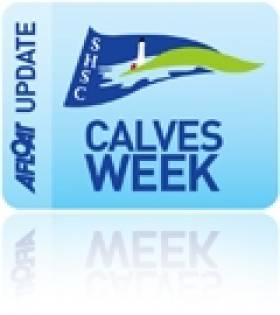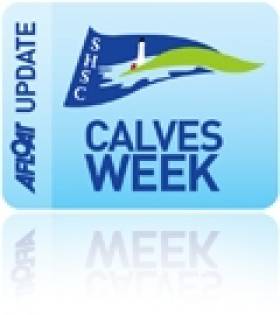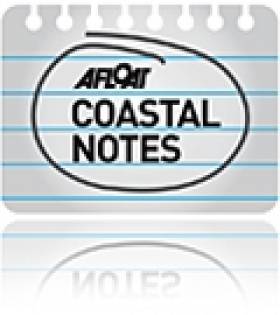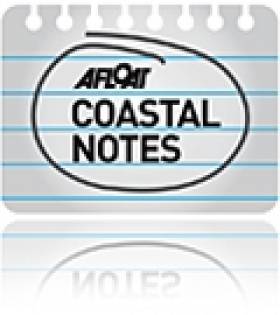Displaying items by tag: Schull
1720s make Calves Week Comeback
With over 60 confirmed entries at present, the 2010 Calves Week in Schull is expected to top the 80 boat mark for the annual West Cork festival of sailing. The week long sailing event is once again supported by the local business community together with sponsorship from Saab, Airtech Security and A&L Castors.
This year’s event will feature racing for eight cruiser classes, together with the growing West Cork 1720 fleet of sportsboats
Due to the dramatic increase in numbers, the White Sail fleet will be split into two, with a cut off point of approximately 35ft. Both fleets will begin the series in Kinsale, where they will start a daylight race to Schull at 8am on Saturday morning July 31st.
The cruiser fleets in Classes Zero, 1 and 2 will start the traditional Crosshaven/ Fastnet/Schull overnight race at an earlier time of 19.30 on Friday 30th from the Weavers Point line, while Classes 3 and 4 will sail a shorter course direct to Schull.
The opening reception and briefing has been moved from the event headquarters at the Fastnet Marine Centre to the Harbour View Hotel in Schull and will take place at 8.00 pm on Saturday 31st, and this venue will also host the final overall presentation of prizes on Sunday August 8th.
The first race from Schull will start on Sunday 1st August when the fleets will sail a variety of courses which will all finish in Baltimore in the late afternoon. Some of the boats will stay overnight for Monday’s regatta with the full fleet again resuming for battle in Schull on Tuesday morning where a costal race is scheduled.
On Wednesday the fleet will sail to Cape Clere Island for the fun regatta of the week. The racing boats will anchor in South Harbour while the support craft will tie up in North Harbour. This infamous event is run by the secret committee of the Cape Clere Yachting Association and has always proved to be the ideal location for the crews to “leave their hair down”
On Thursday the racing returns to Schull with a mid week presentation of trophies in the Courtyard on main street, while on Friday the fleet will round the Fastnet Rock with a finish in Crookhaven, where some of the boats remain overnight for the following days regatta.
The exhausting week will finally conclude on Sunday August 8th with Schull Regatta where racing will take place on a variety of courses in Roaring Water Bay, with the closing ceremony and overall presentation of trophies at 8.00 pm at the Harbour View Hotel.
Calves Week Entry Open
Cork Week's underway, but already its western neighbours are looking ahead to further down the schedule to Calves Week, with already
Schull Harbour Sailing Club has launched its programme of events for the 2010 Calves Week Regatta. Calves Week 2010 will run from Friday 30th July to Sunday August 8th, and comprises of ten races, including the Cape Clear regatta fun event.
Entrants are advised to sign up on-line at www.shsc.ie, as there is a maximum capacity of 100 boats. The event's Facebook page is HERE.
Calves Week is one of Ireland’s best loved sailing and festival weeks, matching competitive racing with a convivial atmosphere, all set against the backdrop of West Cork’s stunning scenery and iconic Fastnet lighthouse. Every year it attracts entrants from around the country, and a few from overseas, with Dublin and Cork clubs being well represented.
The first race is a feeder event, with boats racing overnight from Crosshaven and Kinsale to Schull. Racing begins in earnest with the Schull to Baltimore race on Sunday, continuing with races every day, culminating in the Schull Regatta on Sunday 8th August. Calves week offers the participants a wonderful opportunity of enjoying the magnificent coastal scenery, competitive racing and lots of fun and craic at the onshore events.
Schull Harbour Marina Edges Closer
Schull has been planning a development of their beautiful harbour for the last number of years and at long last it looks like coming on stream.
The committee in charge of the project is now very keen to get an accurate "fix" on the likely up-take on long term boat leases. For work to commence on the project Schull need to pre-sell 150 berths long-term and all are aware that this is not the easiest task in this economic climate.
The project in Schull is very exciting not least because it is a real community project supported by everybody in the village. Planning for this project has been going on for the last 15 years and two years ago Planning Permission for the development was received. The plans are to extend the existing pier facilities by building a breakwater, with a 220 berth marina inside. Schull is a very busy fishing and leisure craft harbour which also has a frequent daily ferry service to Cape Clear Island in the summer. All of these activities have been based on the existing pier which is totally inadequate to cope with all of this activity. During the busy July/August period there would be well over 300 boats on the water in Schull. The new plans will allow the fishing fleet & ferry operators to have the new extended pier area exclusively for their own use and the leisure craft will have a new base on the marina on the northern shore inside the safety of the new extended breakwater.
The biggest single item of cost is the pier extension/ breakwater and the downturn in the economy has meant that the cost of this has now come within budget, and given Schull the opportunity to move forward with their plans. The downside of the current climate is that any grants to help defray the capital cost of the project have also dried up.
When Schull started to apply for planning permission - about 5 years ago - they asked for people interested in the project to support them financially and were very pleased when 110 people put up 3k euro each to kick start the project. So there are a solid base of people interested in a marina berth. The marina will cater for all shapes and sizes of leisure craft and a feature will be a "dry dock" section for RIB owners where they can leave their RIBs in safety up out of the water - eliminating the need to antifoul or scrub every few weeks.
However for work to commence on the project Schull need to pre-sell 150 berths long-term and all are aware that this is not the easiest task in this economic climate.
Schull is a wonderful place, based in Roaring Water Bay with Carberrys Hundred Islands within an hour or two of sailing or gentle motoring. Many of these islands are uninhabited but perfect for that peaceful day out where you can picnic or swim at your leisure. Crookhaven & Baltimore are only 2 hours away as is the Mizen Head and its the perfect gateway to the spectacular cruising grounds of the almost deserted Dunmanus Bay and the great scenery of the Kenmare River.
If you would be interested in learning more about a berth in Schull please log onto this website http://www.surveymonkey.com/s/RSNLYDB and leave some simple details or contact Simon Nelson ([email protected] /02828554) or George Dwyer ([email protected] /0862412991) to register your interest.
Schull Marina Survey Calls for Interest
A marina in Schull is to be completed in Schull by 2011 according to a survey that seeks feedback from interested parties in taking a berth in the new facility. A marina and breakwater has been in the pipeline for nearly 20 years. Planning Permission for the development was received two years ago. Click read more for the survey link.
Schull is well located for a marina and the initiative to bring one to completion has been a genuine community effort.
Schull is a charming village with shops, pubs and restaurants, which is surrounded by countryside, beaches and a bay full of islands for boaters to explore. The sheltered waters of Roaringwater Bay are an ideal place to learn how to sail.































































